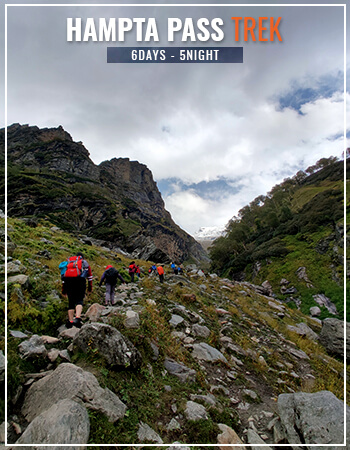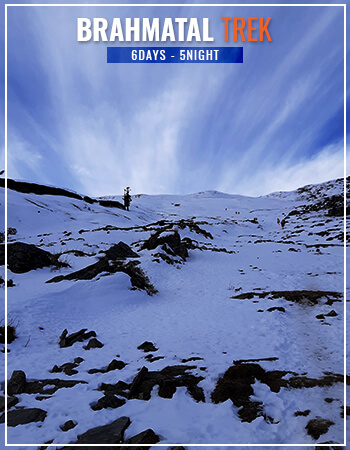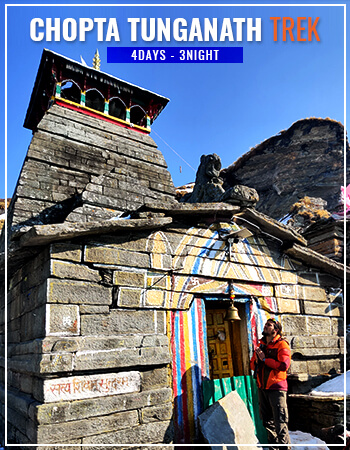Overview
Kedarkantha Trek
Kedarkantha trek 2025: A perfect family picnic of friends holiday trip
The Kedarkantha Trek, located in the Garhwal Himalayas of Uttarakhand, has been a perennial favorite among trekking enthusiasts, offering a perfect blend of adventure and natural beauty. Rising to an altitude of 12,500 feet (3,810 meters), this trek is celebrated for its panoramic views, enchanting trails, and a summit that feels like a doorway to heaven.
This 6-day trek covers a distance of about 20 kilometers; though the trail becomes snow-clogged during winter, it still is an easy trek for beginners. Breathtaking vista views of towering peaks like Swargarohini, Black Peak, and Bandarpunch further enrich each step on your journey.
What Makes Kedarkantha Special?
- Brilliant Summit
The Kedarkantha summit is one of the crowning jewels of the trek, offering unique vistas of the Himalayan range. Reaching this peak at sunrise is a kind of spiritual and visual delight, as the golden rays bathe all the surrounding snow-covered peaks.
- Enchanting Trails
The trek takes you through dense pine and oak forests, charming clearings, and quaint Himalayan villages. In winter, these trails are draped in pristine snow, creating a surreal experience.
- Cultural and Mythological Importance
Local belief says Lord Shiva used to meditate at Kedarkantha. It is therefore of utmost respect by the villagers. The trek merges the natural beauty with a tinge of spiritual allure.
- A Round-the-Year Trek
Although Kedarkantha is mostly preferred in winter for its snow-laden beauty, it can be accessed throughout the year with each season bringing out different perspectives of the landscape.
- Suitable for First-Time Trekkers
The Kedarkantha trek makes an ideal choice for people who want to embark on their first trek owing to a moderate altitude and well-defined trails.
Mythological Significance
Kedarkantha literally means “Throat of Lord Shiva” and is said to have been where Shiva meditated as he was fleeing the Pandavas. On the way, there are a lot of ancient temples and shrines that add up to its spiritual appeal.
Folklore of Juda Ka Talab
The main campsite of the trek is said to have been created when Lord Shiva released water droplets from his hair. The sacred lake freezes in winter, giving the trek a mystical air.
Local Heritage
The trek passes through villages inhabited by the Bawar community, known for their unique traditions and hospitality. Trekkers often get a glimpse of their rural lifestyle and culture.
Kedarkantha Temple
A small temple to Lord Shiva at the summit, surrounded by tridents, serves as a place of worship and reflection.
Weather, Flora, Fauna
Weather
The trek is throughout the year, yet every season brings a unique experience.
Winter (December to March): The trails would be snow-covered, with temperatures freezing between -7°C to 5°C.
Summer (April to June): The weather is nice with temperatures ranging from 5°C to 15°C.
Autumn (September to November): Crisp air and clear skies, ideal for photography.
Flora
The trek features dense forests of deodar, oak, and pine, transitioning to vast alpine meadows. In spring, the trails are adorned with blooming rhododendrons and wildflowers.
Fauna
The region is home to Himalayan wildlife such as langurs, wild boars, and barking deer. Lucky trekkers may even spot a Himalayan monal, the state bird of Uttarakhand.
Read Our
Short Itinerary
Day 1
Dehradun - Sankri (2000m) 9hr Drive
Day 2
Sankri – Shepherd Camp (Trek/3-4 Hrs)
Day 3
Shepherd Camp – Base Camp Kedarkantha (Trek 4-5 Hrs)
Day 4
Base Camp - Kedar Kantha Peak (3800m) - Shepherd Camp
Day 5
Shepherd Camp – Sankri – Dehradun (2 Hr Trek / 8 Hr Drive)
Read Our
Detailed Itenerary
Day 01: Dehradun – Sankri (2000m) 9hr Drive
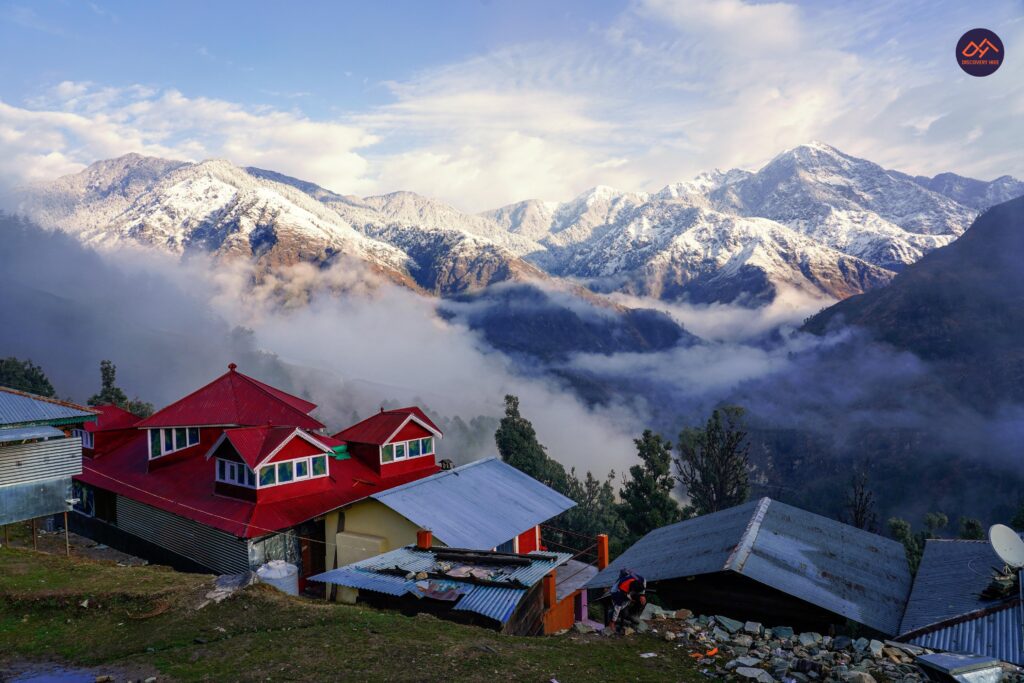
Meet us in Dehradun early in the morning. From here, we’ll begin the scenic drive to Sankri, where we’ll set up camp at an elevation of 6,400 feet. You’ll pass through beautiful towns like Mussoorie, Naitwar, and others along the way. To get to base camp, you’ll be on a scenic drive of a lifetime. Throughout the drive, you will be surrounded by nature, with beautiful scenery and the scent of pinewood and Himalayan flora and fauna. It will take about 7-8 hours to complete the journey. From the start, the stunning and majestic drive will steal your heart. You’ll be welcomed by pine and oak trees, and your route will pass alongside the raging Yamuna & Tons river.
When you arrive, check into your hotel and leave your luggage before taking a walk through the cute little hamlet of Sankri. This is a small Himalayan hamlet with a wealth of natural beauty. A location is well-known among hikers and nature lovers. Sankri is well-known for being a trekking hotspot. The most common treks are Kedarkantha Treks and Har ki Dun Treks, which are both accessible from the Sankri base camp. This location is also well-known among shutterbugs as a spot to quench their photographic thirst.
Day 02: Sankri (2000m) – Shepherd Camp (2900m, Trek/3-4 Hrs)
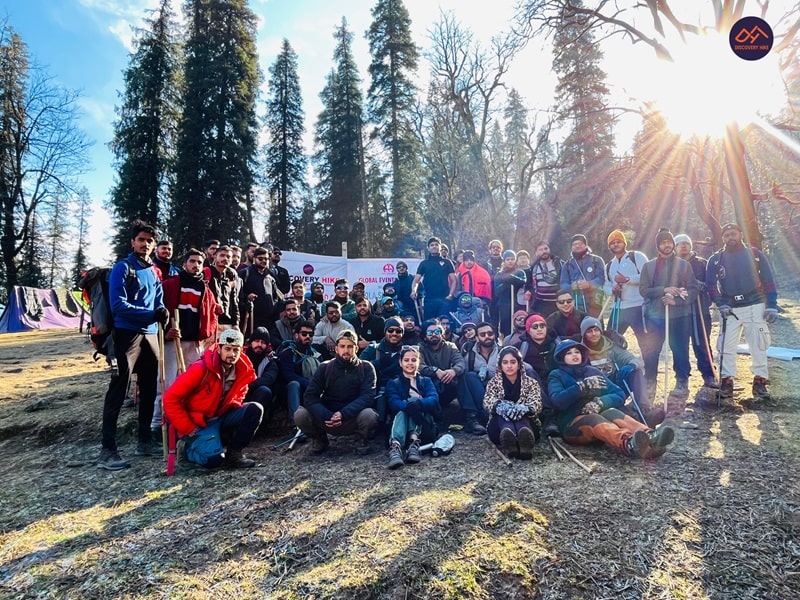
After breakfast, we’ll embark on a mild hike that will take us through the forest for the most part. We’ll walk to Saur village and then climb up to Juda-ka-Talab, a small pond that freezes over in the winter. This lake has a religious meaning & stunning views of snow-capped mountains. Its views have the ability to enchant travelers. You won’t be able to look away until you’ve seen it. You won’t be able to put into words how you feel. Only you will be able to sense it because the words will be short. We will get glimpses of the snow-capped Himalayan peaks as we continue climbing. After another hour of hiking, we’ll arrive at the meadows, where we’ll pitch our tents for the night.
Day 03: Shepherd Camp (2900m) – Base Camp Kedarkantha (3400m, Trek/5 Hrs)
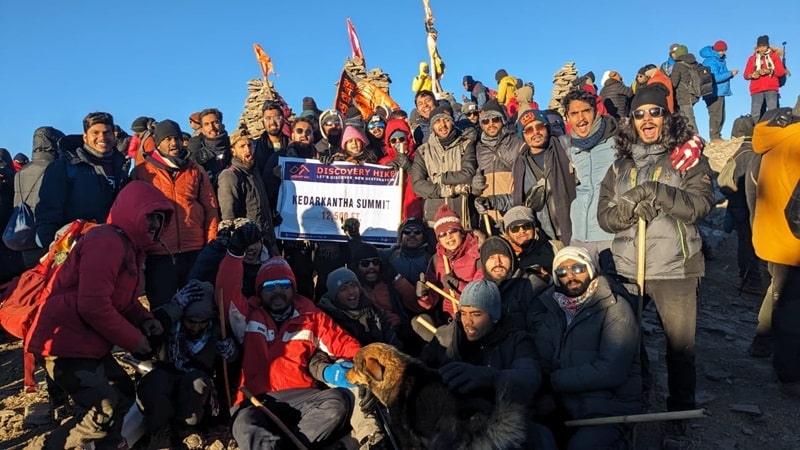
Start early and take in the magnificent sunrise. After a delicious breakfast, we will begin our trek to the Kedarkantha foundation, which is located at an elevation of 11,250 feet. With sufficient breaks, the trek should take about 4-5 hours to complete. The trail is almost level at first, and it follows a well-marked route. However, it soon reaches a thick pine and oak forest before opening into lovely meadows dotted with tiny shepherds’ huts. The imposing view of Bandarpoonch, Swargarohini, Kala Nag, and Ranglana, all of which are snow-capped Himalayan peaks, will take your breath away. These mountains are well-known for their breathtaking views.
When you look up at the tops of these hills, you’ll find that there’s no gap between them and the sky. Mother Nature’s wonders have produced these peaks. These are priceless natural treasures. The view will leave an indelible impression on your mind and soul once you’ve seen it. The view from these peaks will stay with you forever. Swargarohini Peak is 6,252 meters tall, Bandarpunch is 6,316 meters tall, Kalanag is 6,387 meters tall, and Ranglana is 5,554 meters tall. The Garhwal Himalaya covers both of these peaks.
You will enjoy your delicious dinner and your night by sharing your experiences with your travel partners in your cozy tents.
Day 04: Base Camp – Kedar Kantha Peak (3800m) – Shepherd Camp
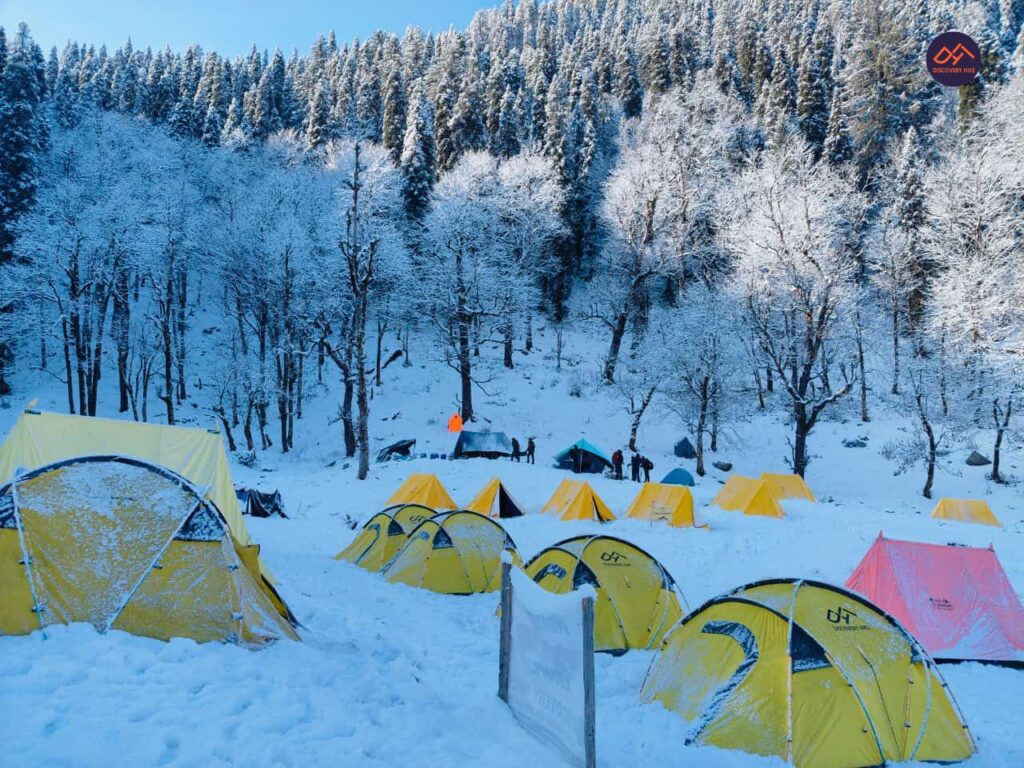
Imagine what the view from the summit would be like if the Kedar Kantha base is that beautiful. The distance to the summit is not long, but the climb is steep, and we will choose the best route based on the snow conditions, which will take about 4-5 hours. You will be able to see all of the mountains in the Yamunotri, Gangotri, and Kinner Kailash ranges, as well as the valleys, from the peak. Then, depending on the route we take, we’ll descend the peak and trek all the way down to Shepherd Camp. We’ll spend the night in tents there.
Day 05: Shepherd Camp – Sankri – Dehradun (2 Hr Trek / 8 Hr Drive)
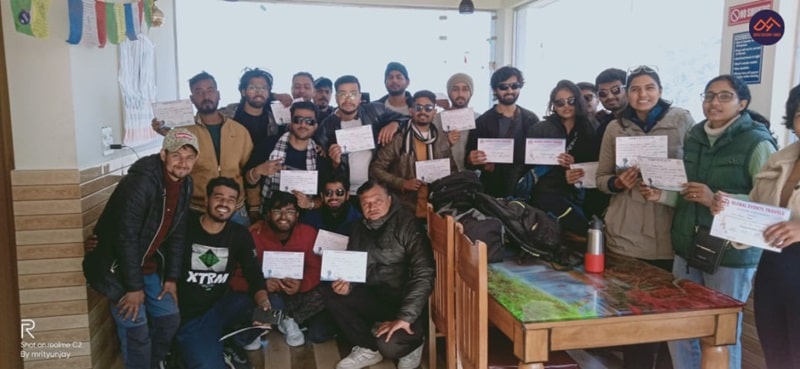
The Kedarkantha Trek Itinerary concludes with a short trek from the campsite to Sankri, followed by a scenic drive to Dehradun. Start your day with a sunrise breakfast amidst the majestic Himalayas before descending to Sankri, where you’ll bid farewell to the unforgettable Kedarkantha Trek. Expect to arrive in Dehradun by 9 PM, marking the end of this remarkable journey.
The following graph will visually represent the altitude gains across the various campsites.
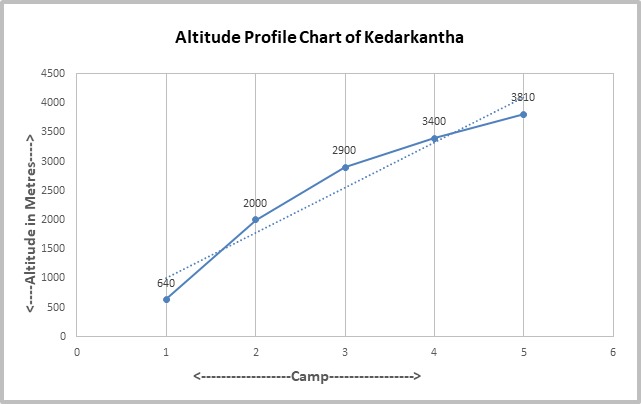
Here X-axis shows the following campsites listed below.
- Dehradun
- Sankri Base
- Shephard camp (Juda ka taal)
- Base Camp
- Summit
The Y-axis shows the altitudes.
Check
Route Map
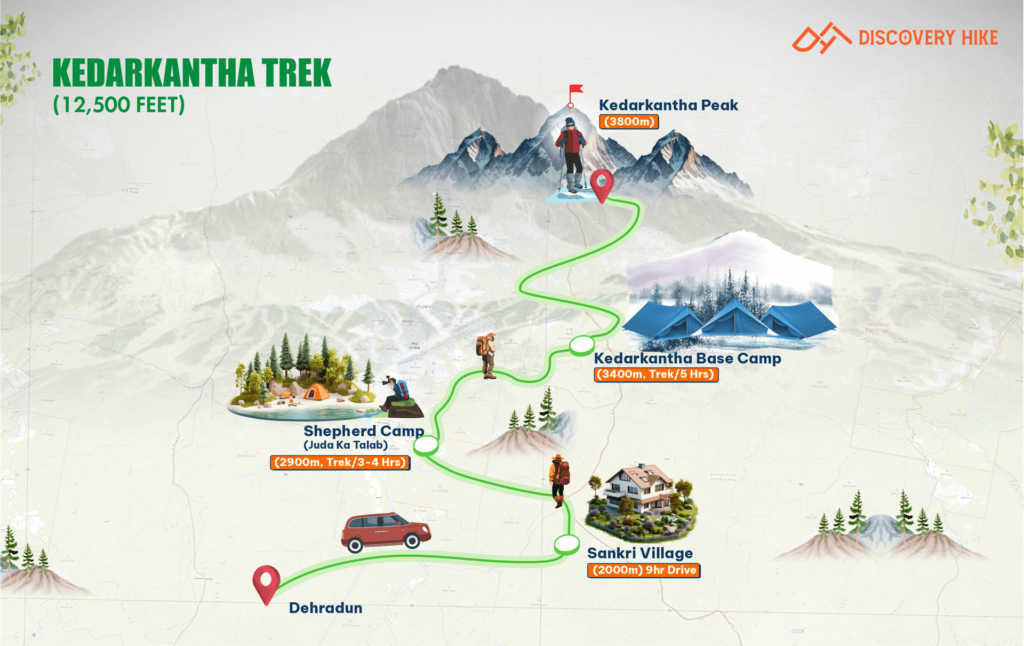
Read
Inclusion
- Transportation: Dehradun to Sankri and back, by Bolero/Sumo/Traveller.
- Accommodation: Stay from Sankri to Base camp is included. Accommodations include a guest house or permanent camp at Sankri and camping tents at the campsites, all on a triple-sharing basis.
- Meals: All meals from afternoon snacks at Sankri on the Arrival Day to breakfast at Shepherd camp on the Last Day are included. We provide simple, nutritious, and healthy food daily on the trek. *Note: Meal variety is subject to change, depending on the availability.
- Permit: Forest permit charges are included.
- Tent & Sleeping Bag: Quality tents, mattresses, and sleeping bags are provided in the camps, along with a liner.
- First Aid Kits: Carried by our trek leaders and guides. Emergency medical issues are addressed with utmost care.
- Adept Trek Leaders and Team Members: Our local Himalayan team includes professional trek leaders with mountaineering qualifications and familiarity with the local terrain. The team also includes well-trained guides, cooks, and helpers.
Read
Exclusion
- Food During Road Journey: Meals between Dehradun and Sankri are not included.
-
Backpack Offloading Charges: An additional charge of Rs-350/- per bag per day for offloading, with a maximum weight limit of 10 kg per backpack.
*Note: Suitcases/trolleys/duffel bags are not allowed. Offloading during the trek is subject to prior arrangement. - Stay & Unplanned Transport: Accommodation in Dehradun or any unplanned transportation, which is not mentioned in the itinerary.
- Personal Expenses: Any kind of personal expense is not included in the cost.
- Rescue Cost: Expenses for any trekker needing to be sent back or rescued.
- Others: The Kedarkantha Trek Cost excludes transportation, personal gear, insurance, unforeseen expenses, transit meals, tips, and additional services like mules or porters.
Read
Other Information
Typical items included in the meals are:
- Breakfast: Wake-up Tea/Coffee, Biscuits, Aloo Paratha with Achaar, Boiled Egg, Bread with Butter/Jam, Fruit, etc.
- Lunch: Roti/Chapati, Rice/Chawal, Manchurian Rice, Salad, Dal (Rajma), Mixed-Veg, Kofta Curry, etc.
- Snacks: Tea, Coffee, Pakoda, Finger Chips, Veg Cutlet, Maggi, Soup, Popcorn, etc.
- Dinner: Roti/Chapati, Rice/Chawal, Matar Paneer, Mixed Dal, Salad, Papad, Sweets (Gulab Jamun, Jalebi), Fruit Custard, etc.
Weather and Climate Info:
- Summer (April – June)
As you traverse the Kedarkantha trek during the summer months, you’ll be greeted by a landscape that’s both cool and pleasant. April marks the end of winter, with the melting snow giving way to spellbinding greenery. The Month of May unveils the trek’s true summer charm, with a kaleidoscope of freshly bloomed flowers filling the air with their sweet fragrance. June brings the mountains and valleys to life, dressing them in a vibrant array of flora.During these months, the temperature ranges between 6°C to 20°C, offering a comfortable climate for trekkers. The charm of trekking amidst the lofty pine and oak trees is unparalleled during this period, making summer an ideal time for sightseeing and exploration.
- Monsoon (July – September)
The monsoon season in Kedarkantha presents a different kind of allure. With moderate to heavy rainfall, the valley transforms into a lush green heaven. While trekking can be challenging due to occasional landslides, the breathtaking monsoon vistas are worth the effort for many adventure seekers. July marks the onset of the monsoons, and August brings generous rains, painting the landscape with an array of colorful flowers, each petal adorned with raindrops.Despite the wet conditions, the temperature remains stable at around 12°C. The weather is predominantly cloudy and wet, offering a unique trekking experience with verdant greenery at every turn.
- Autumn (October – November)
Autumn in Kedarkantha is a period of transformation. October and November see temperatures ranging from 0°C to 15°C, with the weather remaining mostly clear. The green leaves slowly turn dry, and the lush meadows gradually change to brown, offering a stark contrast to the previous seasons. This period is ideal for beginners, as the weather is pleasant and the landscape offers majestic sights of the Himalayas. - Winter (December – February)
Winter is when Kedarkantha truly comes into its own. The temperature drops to a range of -2°C to 12°C, and the landscape is enveloped in a thick blanket of snow. This season transforms the region into a surreal, dreamy world, attracting trekkers from across the globe. December sees the beginning of fresh snowfall, and January intensifies the experience with frequent snowfalls. February offers the most thrilling trekking experiences with high chances of snowfall, creating perfect conditions for skiing enthusiasts. - Temperature Overview
Summer (May – June): Day: 20°C, Night: 6°C
Monsoon (July – August): Day: 17°C, Night: 4°C
Autumn (September – November): Day: 15°C, Night: 2°C
Winter (December – February): Day: 10°C, Night: -12°C
Spring (March – April): Day: 12°C, Night: -5°C
Mountain Ranges, River Valley & Lake:
The Kedarkantha trek, nestled in the Uttarkashi district of Uttarakhand, India, is renowned for its mesmerizing natural beauty and diverse landscapes. This trek is a popular destination for those seeking a blend of adventure and scenic splendor. Here are some details about the mountain range, river valley, waterfalls, and lake in the Kedarkantha region:
- Mountain Range and Scenery: Kedarkantha, situated at an elevation of 3810 meters, is part of a stunning mountain range that offers spectacular views of several peaks, including Ranglana, Banderpooch, Black Peak, and Swargarohini. During winters, the area is covered in snow, adding to its allure. The trek itself is relatively easy and rewarding, suitable for those seeking mild adventure amidst natural beauty.
- River Valley and Water Availability: The trek is located in the lap of the river Valley, offering a serene environment. Water is available at camp houses along the trek, and trekkers also have access to clean water from the river Supin, which lies on the route. However, it is advisable to stock up on water as it may not be easily available between trekking points.
- Frozen Lake – Juda Ka Talab: A significant attraction along the Kedarkantha trek is Juda Ka Talab, a serene and picturesque lake. This lake was originally two separate lakes but has since conjoined into one. The trail to Juda Ka Talab passes through green meadows and dense forests of pine and oak, leading to this tranquil spot which is ideal for camping.
- Overall Landscape and Environment: The Kedarkantha trek is characterized by its thick oak and pine forests, wide-open green meadows, serene lakes, and panoramic views of the majestic Himalayan peaks. This diverse landscape makes the trek not only a journey through different terrains but also a visually captivating experience.
In summary, the Kedarkantha trek offers a rich tapestry of natural elements, from towering mountain peaks and lush valleys to tranquil lakes and dense forests. It’s a journey that combines physical challenge with the reward of unparalleled natural beauty.
Flora and Fauna:
- Flora: The Kedarkantha Trek in India is renowned for its diverse and enchanting flora and fauna. As you trek through the region, you’ll encounter dense forests of pine, oak, and rhododendron trees, creating a verdant canopy above. In spring, these forests are transformed with colorful rhododendron blossoms in shades of red, pink, and white, infusing the air with their sweet fragrance. The area also boasts a variety of Himalayan wildflowers, including the sacred Brahma Kamal, and is a haven for botanists and photographers.
- Fauna: The wildlife in Kedarkantha is equally impressive, with a variety of animals and birds. Birdwatchers might spot Himalayan Monal pheasants, known for their iridescent plumage, as well as eagles, vultures, and various species of finches and owls.
The region hosts a rich avian population, including species such as:
Black Francolin, Koklass Pheasant, Kalij Pheasant, Brown-fronted Woodpecker, Himalayan Woodpecker, Scaly-bellied Woodpecker, Great Barbet, White-throated Kingfisher, Crested Kingfisher, Slaty-headed Parakeet, Himalayan Swiftlet, Snow Pigeon, Oriental turtle Dove, Black Kite, Lammergeier, Himalayan Griffon, Common Buzzard, Black-headed Jay, Eurasian Jay, Yellow-billed Blue Magpie, Red-billed Blue Magpie, Red-billed Chough, Large-billed Crow, Common Raven, Spotted Nutcracker, Yellow-browed Fantail, Bronze Drongo, Brown Cipper, Blue Whistling Thrush, Blue-capped Redstart, White-capped Water Redstart, Plumbeous Water Redstart, White-cheeked Nuthatch, White-tailed Nuthatch, Eurasian Treecreeper, Rusty-flanked Treecreeper, Rufous-Vented Tit, Spot-winged Tit, Grey-crested Tit, Green-backed Tit, Black-throated Tit, Black-lored Tit, Great Tit, Yellow-browed Tit, Winter Wren, Himalayan Bulbul, Red-vented Bulbul, Black Bulbul, Striated Prinia, Lemon rumped Warbler, Tickells’s Leaf Warbler, Mountain Chiffchaff, Oriental White-eye, White-throated Laughingthrush, Streaked Laughingthrush, Black-chinned Babbler, White-throated Shrike Babbler, White-browed Fulvetta, Whiskered Yuhina, Rufous Sibia, Russet Sparrow, Citrine Wagtail, Alpine Accentor, Plain Mountain finch, Red-mantled Rosefinch, Rock Bunting, Chestnut-eared Bunting.
The forested areas provide a home to Himalayan langurs, wild foxes, Indian Crested Porcupines, Yellow-throated martens, Wild boars, Black bears, Ibexes, Blue sheep, and the elusive leopards.
Photography Tips:
- Understand the Light: The Himalayas offer dramatic lighting conditions. For the best photographs, capture early morning and late afternoon scenes when the light is soft and golden. Midday light can be harsh, but it can also highlight the stark contrasts of the landscape.
- Capture the Flora and Fauna: Kedarkantha is home to a rich array of flora and fauna. Capture the vibrant rhododendrons in spring, the lush greenery in the monsoon, or the snow-blanketed trees in winter. For wildlife, carry a zoom lens to capture distant birds or animals without disturbing them.
- Landscape Photography: The panoramic views of the Himalayas are breathtaking. Keep your wide-angle lens handy to capture a wide range of the landscape. Try incorporating elements like a trekker or a tent in the foreground to give a sense of scale.
- Experiment with Perspectives: Try to observe the scenic moments from different angles and perspectives. For instance, a low-angle shot of a trail leading into the mountains can add depth and intrigue to your photos.
- Utilize the Rule of Thirds: This basic principle of photography helps in composing balanced and interesting shots. Divide your frame into nine equal segments and place the important elements along these lines or their intersections.
- Capture the Local Culture: Kedarkantha trek passes through quaint villages. Capture the local architecture, people, and their daily lives. Always take permission before capturing people.
- Night Sky Photography: The clear skies at high altitudes are perfect for astrophotography. Use a tripod and long exposure settings to capture the stars and perhaps the Milky Way.
- Be Prepared for Weather Changes: The weather in the Himalayas can change rapidly. Protect your camera equipment from rain and snow. Keep batteries warm in cold weather as they can drain quickly.
- Travel Light: While it’s tempting to carry all your gear, remember you will be trekking at high altitudes. Prioritize and take only what you need.
- Respect the Environment: While photographing, be mindful of your surroundings. Don’t damage the natural environment or disturb wildlife.
Bonus Tip: Practice Patience Sometimes, waiting for the right moment, light, or movement can make all the difference in a photograph.
Things to Carry:
Hiking Shoes
- Type: We recommend that you look for water-resistant shoes with a deep yet flexible sole to sustain on Himalayan terrains.
Note: Dynamic rough terrains hold uncertain threats. The pair of shoes that has the advantage of overcoming those threats will help you to maintain your confidence in balancing.
Backpack
- Type: It purely depends on the kind of Trek you plan.
- (15-20) litres will be ideal for short treks of (1-3) days.
- (40-60) litres will be ideal for long treks of (3 – 10) days.
Note: A backpack comes under very essential for the activity like trekking. You will have a requirement of your Backpack throughout the journey for your belongings and all the essentials you need. We recommend you test the bag and choose it according to your height, the Trek where you are taking it & comfort it provides.
Daypack
- Type: A (10 – 15) litres waterproof daypack is all you need to have with you for the Summit.
Note: Your Daypack will be for those Summit days and shorter days when you just need your essentials (wallet, small water bottle, sunglass, power bank, etc.) with you.
Clothing
- Collared T-shirts – Carrying 2 – 3 units of collared T-shirts will be ideal. The collar will help you to keep your neck away from direct sunlight and not too exposed to the Sun and getting sunburnt.
- Padded Jacket – Ensure that the jacket is wind-resistant & capable of keeping you warm at -10 °C to -12 °C temperature.
- Fleece Jacket – Fleece jackets are made of very soft and cozy material. It helps you to maintain a comfortable body temperature. Keep 2 Fleece Jackets with you.
- Thermals – You will have a requirement of only 1 pair of this in the Winter, For Summer it could be under consideration. It is made of pure cotton and designed in such a way that body heat is blocked between its layers. It will keep you warm during the nights when the temperature falls.
- Trek Pants – You will have a requirement of 2 units of Trekking Pants with you always. Between them, one must be convertible. Ensure it is made of Cotton or windproof light material & provides maximum durable comfort.
- Sun Caps –The Sunlight might be harsh at higher Altitudes and the direct exposure of sunlight to your head is harmful to your skin. Carry Sun Caps to keep your head cool.
- Woolen Caps – You will need woolen caps during the nights to keep your ears and head warm from the very cold breeze.
- Waterproof Gloves – You will require waterproof gloves for cold and wet sections of the Trek. Always keep your hands clean & warm, and avoid letting your hands wet to get the supporting grip and balance.
Trek Accessories
- Trekking Pole: The Trekking/Hiking Pole saves 60% of your energy for conquering a steep slope at a higher altitude. It is advisable to carry a trekking pole with you for the treks.
- Head-lamp or Torch: A head-lamp is another important thing that also comes under mandatory items for our Treks. It will help you to deal with the dark. Headlamps become more effective to walk in dark cold weather without approaching through your hand. Featured Torch is also ok for uphill.
Daily essentials
- Toiletries: We recommend you carry all your Toiletries essentials and all other personal belongings by yourself to avoid borrowing. Here are some items you could take- tooth-cleaning paste, dental brush, lip moisturizer, skin hydrating cream, facial cleanser, a range of vital creams and items, bathroom tissue/toilet paper, menstrual pads, along with other important personal care items like shampoo, conditioner, deodorant, and shaving supplies.
- Containers & Vessels: It’s advisable to bring your water containers; we recommend two bottles each with a capacity of 1 litre. Additionally, for both ease and hygiene reasons, please carry your food containers to use for the meals we supply. The metal bottle comes in handy for hot water served in the camps.
- Recommended Medicines: Gauze 1 small roll, Dexamethasone one strip, Nifedipine 5 tablets, Band aid 10 strips, Avomine 4 tablets (motion sickness), Avil 25mg 4 tablets (allergies), Combiflam 4 tablets (Pain killer), Crepe bandage 3 to 5 meters, Disprin 6 tablets (headache), Crocin 6 tablets (fever), Digene 10 tablets (acidity), Omez/ Rantadine 10 tablets (antacids), Norflox TZ & Lomofen 6 tablets each (diarrhea), Diamox 10 tablets (to prevent AMS), Cotton 1 small roll
Essential Documents Required:
For the Kedarkantha trek, you must bring specific documents and submit those to the trek leader at the base camp. These include a copy of the Disclaimer, along with one photocopy and the original of a government-issued photo ID. Additionally, a doctor’s medical certificate confirming your fitness for high-altitude scenarios is required.
Risks and Precautions:
Here are the risks or challenges you might face on the Kedarkantha Trek.
- Risk of slip/skid: Kedarkantha is a moderate trek that tests the patience and challenges the skills of trekkers. It helps in developing confidence, patience, and strategic planning abilities. While trekking in the winter season there is a possibility of slip/ skidding as the trail is scattered with black ice, especially in December, and January, and in addition, weather is very much unpredictable in the Himalayas.
- Safety Precautions: To address these challenges, there will be a briefing session at the base camp about the risks of slipping or skidding. A trained trek leader will guide trekkers in maintaining body balance and show them how to use the trekking poles properly.
The Discovery Hike will provide crampons to the trekker for the snow-filled trails. These crampons are specially designed to hold a better grip on snow trails and minimize the risk of skidding up to 95%. The Trek leader shall accompany the team and shall aware the team members about the situation.
While choosing your shoe, remember that the shoe must have a good grip.
- High Altitude Risks: During the Kedarkantha trek, which ascends from 6,400 feet to 12,500 feet over 4-5 days, there’s a small risk of Acute Mountain Sickness (AMS), High Altitude Pulmonary Edema (HAPE), and High-Altitude Cerebral Edema (HACE), especially at higher camps like the Kedarkantha campsite.
- Safety Precautions: To prevent these conditions, trekkers can start taking DIAMOX from the first day, as it significantly reduces AMS risk. Trekkers trained to recognize AMS symptoms should promptly report them to the trek leader. The leaders are prepared with a high-altitude medical kit and oxygen cylinders for safety. If conditions worsen, trekkers may need to move from higher to lower campsites.
- Dealing with Blisters and Cramps: Blisters cuts and cramps occur very often while we are walking or trekking on uneven trails.
- Safety Precautions: If a trekker experiences a blister or cramp, they need to quickly inform the trek leader, who carries a treatment kit. To prevent blisters, it’s recommended to use well-fitting trekking shoes that are breathable and have a good grip. For leg cramps, apply cramp spray, which both trekkers and the trek leader should have.
- Weather Risks at High Altitude: The weather at high altitudes, particularly in the Himalayas, is known for being unpredictable and can sometimes worsen quickly.
- Safety Precautions: The trek leader will make the call to either continue or wait for better weather. If the weather stays harsh and could worsen, the team might need to descend for safety. We provide all-weather tents to cope with different weather challenges.
- Communication Risks: As you go higher on the Kedarkantha trek, from 6,400 ft to 12,500 ft, communication signals weaken and eventually we might lose connection completely, isolating us from the outside world. But there’s no need to worry about this disconnection.
- Safety Precautions: To stay connected, we use walkie-talkies as an alternative way to communicate with people at different campsites.
- Emergency/ Immediate rescue: In case of severe health issues or other emergencies, immediate rescue might be necessary.
- Safety Precautions: If a serious situation arises due to AMS, cramps, illness, or breathing problems, the trek leader and staff will quickly use resources like porters and mules for rescue. A standby team at different campsites will assist, and airlifts are arranged in acute cases.
- Risk of low oxygen at higher altitudes: Oxygen levels decrease as altitude increases, which can cause breathing difficulties. Although low oxygen levels are rare on the Kedarkantha trek, it’s still possible.
- Safety Precautions: If anyone experiences problems related to low oxygen levels, we have plenty of oxygen cylinders with the trek leader and staff. Affected trekkers should inform the leader or descend to a lower campsite for immediate help.
Overall Safety and Cooperation:
Our main goal is your safety and enjoyment during the trek. We ask for your full cooperation and advice against using any objectionable substances while trekking.
Seasonal and Occasional Activities:
Seasonal –
The Kedarkantha trek in Uttarakhand, India, offers distinct experiences across different seasons, each with its unique charm and set of activities:
- Winter (December to February): This season is ideal for experiencing the beauty of snow-capped mountains. The trek becomes a winter wonderland, with temperatures dropping as low as -5 degrees Celsius. It’s a popular time for those who wish to experience snowfall and enjoy the pristine white landscape.
- Spring (March to April): Spring brings the melting of snow and the blooming of flowers, transforming the landscape into lush green meadows and vibrant flower carpets. This season is perfect for those who appreciate the rejuvenation of nature and the fresh greenery of the forests.
- Summer (May to June): The daytime temperatures during summer are comfortable, ranging between 18-24 degrees Celsius. However, the blazing sun at noon can make trekking a bit uncomfortable. This season is less recommended for trekking due to the heat, but it’s still possible for those who can tolerate the warmer conditions.
- Monsoon (July to mid-September): The monsoon season brings risks of heavy rainfall and lightning, making the trek more dangerous. It’s advised to avoid trekking in Kedarkantha during this period. Trekkers might prefer to explore other trails that are safer in the monsoon.
- Autumn (mid-September to November): Autumn is another ideal time for the trek, offering views of crisp mountain tops and small waterfalls. The weather is more stable, making it a favorable time for trekking.
Each season in Kedarkantha presents a unique experience, from snow-covered trails in winter to blooming meadows in spring, offering trekkers a range of options based on their preferences and the type of adventure they seek.
Occasional:
- New Year celebration at Kedarkantha Peak: Welcoming a new year by summiting the peak at the mountains has now become a trend for mountain lovers and trekker communities. There is a religious belief too related to Lord Mahadev. They wish to worship the lord by going close to him on the very first day of the new year. The rush to the moderate level peaks on the year-end days remains high every year. That’s how an entire trail route becomes heaven-stairs and the witnessing of sunrise on the very first day of the year becomes Heaven-view.
Local Language Phrases:
Hello – “नमस्कार” (Namaskar)
How are you? – “तुम कसै छौ?” (Tum kase chau?)
My name is – “मेरु नाम …” (Meru naam …)
I am fine. How are you? – “मी ठीक छौं. तुम कसै छौ?” (Mi theek chaun. Tum kase chau?)
Please help me. – “कृपया, मेरी मदद करें.” (kripya, Meri madad karen.)
Tell me the route. – “मुझे रास्ता बता.” (Mujhe rasta bata.)
Where am I right now? – “मी अभी कख छौं?” (Mi abhi kakh chaun?)
Please rescue me. – “कृपया मुझे बचाओ.” (Kripya mujhe bachao.)
Do you have medical kits? – “क्या तुमरे पास मेडिकल किट छै?” (Kya tumre paas medical kit chhai?)
Will you join me? – “तुम मेरु साथ द्याओलु?” (Tum meru sath dyaolu?)
How long will it take to reach the summit? – “शिखर तक पहुंचण मा कती समय लगोलु?” (Shikhar tak pahunchan ma kati samay lagolu?)
Where is the next Maggi point? – “अगला मैगी प्वाइंट कख छ?” (Agla Maggi point kakh ch?)
Will there be too much cold? – “क्या ज्यादा ठंड ह्वालि?” (Kya jyada thand hwaali?)
What is the name of the nearest village? – “नजीकी गांव का नाम क्या छ?” (Naziki gaon ka naam kya ch?)
Is there any update of heavy snowfall? – “क्या भारी हिमपात कु अपडेट छ?” (Kya bhari himpaat ku update ch?)
Check
Upcoming Batches
Nov :
9th Nov to 13th Nov | 14th nov to 18th nov | 15th Nov to 19th Nov | 16th Nov to 20th Nov | 21th Nov to 25th Nov | 22nd Nov to 26th Nov | 23rd nov to 27th Nov | 29th nov to 03rd Dec | 30th nov to 04th Dec
Dec :
05th Dec to 09th Dec | 06th Dec to 10th Dec | 07th Dec to 11th dec | 08th Dec to 12th Dec | 09th Dec to 13th Dec | 10th Dec to 14th Dec | 11th Dec to 15th Dec | 12th Dec to 16th Dec | 13th Dec to 17th Dec | 14th Dec to 18th Dec | 15th Dec to 19th Dec | 16th Dec to 20th | 18th Dec to 22ndDec | 19th Dec to 23rd Dec | 20th Dec to 24th Dec | 21th Dec to 25th Dec | 22nd Dec to 26th Dec | 23rd Dec to 27th Dec |24th Dec to 28th Dec | 25th Dec to 29th Dec | 26th Dec to 30th Dec | 27th Dec to 31th Dec | 28th Dec to 01st Jan | 29th Dec to 02nd Jan | 30th Dec to 03rd Jan | 31th Dec to 04th Jan
Jan :
3rd Jan to 07th Jan | 4th Jan to 06th Jan | 10th Jan to 14th jan | 11th Jan to 15th Jan | 17th Jan to 21st Jan | 18th Jan to 22st Jan |24th Jan to 28th Jan | 25th Jan to 29th Jan | 30th Jan to 04th Feb
Feb :
01st Feb to 05th Feb | 07th Feb to 11th Feb | 08th Feb to 12th Feb | 14th Feb to 18th Feb | 15th Feb to 19th Feb |21st Feb to 25th Feb | 22nd Feb to 26th Feb | 28th Feb to 04th March
Mar :
01st march to 05th March | 07th March to 11th march | 08th march to 12th March | 14th March to 18th March | 15th March to 19th March | 21st March to 25th March | 22nd March to 26th March | 28th March to 01st April | 29th March to 02nd April
Check
Our Gallery
Read
FAQ's
The Vehicle of Discovery Hike will pick you up from the Dehradun Railway Station around 06:30AM morning. The Vehicle will wait for maximum half an hour or more if the train is late or any genuine issue has been raised by the trekkers.
For experiencing snow, you can opt for December to late April. For greenery visit in between May to September.
In summer It varies between 5°C to 20°C and in winter the range changes to 4°C to -12°C.
Your trek ends in Sankri. From Sankri, Discovery Hike will arrange transport that leaves at 06:00AM at an additional cost of Rs. 6,000 which could be shareable if any other trekkers exist. You are expected to reach Dehradun by 18:30 and you can the catch your overnight train or bus to Delhi.
Tents are typically shared by three trekkers. However, you can opt for a two-person tent at an extra fee of Rs.2000 per person. Payment for this customization needs to be made through Cash/ bank transfer instantly.
Discovery Hike will arrange tents and sleeping bags. The tents are designed for harsh conditions, and sleeping bags can withstand temperatures as low as –15°C.
An experienced trek leader and qualified staff from Discovery Hike will ensure a safe and comfortable journey throughout the trek.
No special shoes are needed. Normal shoes with good grip and water resistance are sufficient. Crampons and gaiters are provided for snow trails.
Yes, it's suitable for beginners, categorized as Easy to Moderate. Good physical fitness is important for high-altitude treks like this.
Your poncho will keep you dry while trekking. Our tents, including camping, toilet, kitchen, and dining tents, are waterproof. It's advised to buy a rain cover for your bag.
Yes, trekking poles are essential. They reduce energy expenditure by 60% and are crucial for high-altitude treks.
Kuari Pass and Deoriatal Chandrashila are good alternatives, suitable for beginners. They offer snow till April and stunning views of mountains and forests.
Yes, it's suitable for children aged 8 and above, provided they are fit and can hike around 5 km daily. Adequate high-altitude preparation is important.
Generally, we accommodate with 3-4 toilet tents in every camp. We provide gender-specific toilet tents with dry pits. In Sankri, there are constructed toilets, but on trek days, dry pits are used.
Yes, for Rs.2,200 plus 5% GST for the whole trek. Last-minute requests cost Rs.350 per day plus GST. Backpacks must be under 9kg; suitcases/trolleys aren’t allowed.
You can fill your bottle from the natural resources like cascades. It's advisable to ask your Trek-leader before filling it.
Carry 2 liters daily to stay hydrated.
Good network of Jio and BSNL till Sankri; charge devices there as no points afterward. Bring spare batteries/power banks.
From December to April, wear three layers including thermals, sweaters, and jackets. Don't forget socks and a woolen cap. For May to September make it light accordingly.
Yes, there's a luggage room for storage during the trek.
Basic trekking gears, a declaration, and a medical certificate.
Yes, items like ponchos, poles, jackets, shoes etc. are available for rent. You can check our detailed specified column in the website for arrangements.
A balanced diet varying with altitude, including breakfast items like eggs and parathas, and meals with daal, rice, vegetables, chapattis. Meals variety is changeable and subject to availability.
Discovery Hike vehicles have portable toilet tents for emergencies.
₹ 10,240
₹ 8,000 28% off
Per Person
Key Highlights
- ➧ Duration : 5D/4N
- ➧ Elevation : 12,500ft
- ➧ Best Time : Nov - March
- ➧ Pick Up & Drop : Dehradun
Upcoming Batches
For Any Queries
+91-9458118063 | +91-7579480944
Read
Client's Feedback
Verified Phullera Ridge Trek. It was a great experience to trek over phullera ridge with discovery hike. The ridge trek was very very challenging as well as full of excitement. Enjoy those days with nice guide, foods and other facilities that provided by the discovery hike.Posted onVerified Outstanding Behaviour of Ganga, Prakash & the team were very heart warming.. They provide us outstanding foods and accommodation.Posted onVerified Bali Pass ( Discovery Hikes ) If you like to get drenched in nature then this is it ! Bali Pass is full of unexplored jungles, flower valleys, waterfalls, glaciers and wild berries to eat 🤤 All this experience gets even more amazing when you have an experienced crew by your side ! Discovery hikes provide you with an unforgettable experience coz they provide you with great food (tasty) & sweet dish at an altitude you cant expect. Moreover, the survival tips and they take care of your tantrums like a mother 😅 Ganga Rana, Mayank bhaiji & team made our experience more comfortable and we did the summit with moderate ease. Safety wise, it's a heads up with this team. P.S. - If you that guy who lags behind everytime and gets exhausted very easily 😂, Don't worry ! Discovery hikes won't leave you alone ! There is a guide each in the front, middle & back of the group.Posted onVerified Super duper adventurous trip ever Myself Kirti from Delhi...this is my 2nd trek with discovery hike team..Bali pass is a high altitude and long trek which needs everything like medication food shelter washrooms and mental support and motivation....and I must tell Ganga & Govind Rana team provides us everything whatever say variety of food like jalebi, gulab jamun, shahi toast, soup, noodles, pakoda, rajma rice,,there is no ending of food varieties for all days which we never expect from anyone in 16200ft,,,both guys and his team like porters all are very very supportive in all stages,,always they ready to giving his hands to someone's hands for support (jinka ❤️ sensitive h like me),,,,, they never say NO,,,,, I was in need of extra support for trekking and these guys gave me full support from starting to end.....in every step I scared from walking but Govind & Ganga were saying to me "DARNA NAHi JAb MEI HU...kahe darna..mei kheti ok sir😝😝😝....their tents/sleeping bags was good....there was lots of activities between the way like rappling, river crossing,, hiking,, ect....if u like adventure then u should go with this team.... discovery hike team is very hardworking by nature....thankss to alllll Ganga & Govind discovery hike team for Marvelous Adventure I had ever in my life.............we will come back again......seeeuuuuuSooonnn.....Posted onVerified Best treking company in Himalayas One of the finest treking company in Himalayas of India. They serve you the best food more the 4 times a days. Sweets in dinner and very friendly people always ready to solve the problem we face on the trek. Very humble and professional people. Love to trek with ganga and his team. Thank you for the wonderful 👏 experience.Posted onVerified Discovery hike Amazing experience with discovery hike spacial thanks to mr. Ganga rana for providing such a great service with exoerienced guide....i did 3 treks with the company.. Harkidun kedarkantha and balipass... I had a good time on the trail... Five star.. 🖤Posted onVerified Bali pass trek I trek with Discovery Hike on Bali Pass from 3-11 September 2021. I had experienced many treks with different adventure companies but Ganga bhaiya and his team is one of the best in all fronts, he and his very best team take care of us. One of the things that needs to complete a difficult trek is food they provide you excellent food, at such a high altitude their food quality doesn't depreciate. Thanks to Ganga bhaiya, Mayank bhaiya and Govind bhaiya and all the staff of Discovery Hike we made it till end. The very last day is like leaving a family. All the best for future expeditions.Posted onVerified Most recommendable Team....worth time and Money This was the best trip we ever had... although with Ganga as guide trip becomes more and more interesting every time , his motivational and thrilling Stories keep us goin on and on plus food is sth beyond compare as it is very difficult to have good food on very high altitude but they made it..his team is the best, very supportive and friendly. They helped us every time we were exhausted and kept us safe till the last destination which was recommendable job. Looking forward to next trip 🤟🏻🥳Posted onVerified Trek with Discovery Hike is like full paisa vasool. This is my 3rd trek with discovery Hike. Trek with discovery Hike is awesome and memorable. I started my trekking journey from Delhi with my friends and they pick us from Dehradun to Sankri Village by comfortable taxi and provide us very delicious and tasty food. Provide A very helpful, experienced guide. At the high altitude, they provide us very warm nd hygiene tents and sleeping bags. and no one can match their taste in food. Thank uh so much Ganga Rana, Govind bro and all team of Discovery hike for providing us all facilities, delicious food, good memories and lot of fine experience. I'll do more treks with ur team.Posted onVerified Best winter trek with the best people Had an amazing experience with Discovery Hikes. Thanks to Randev Ji Urf Hodda Ji for being an amazing trek guide. 😊Posted on

